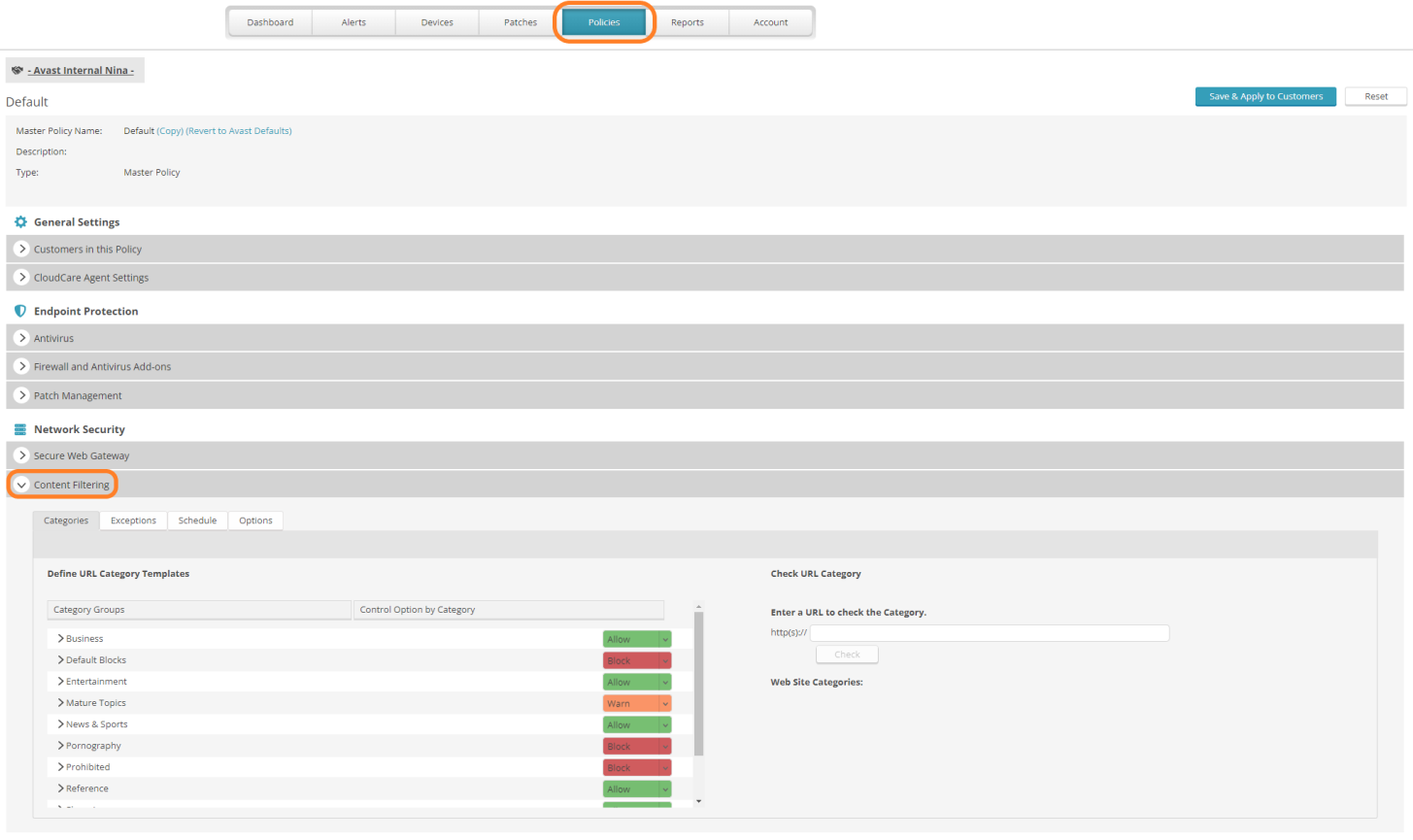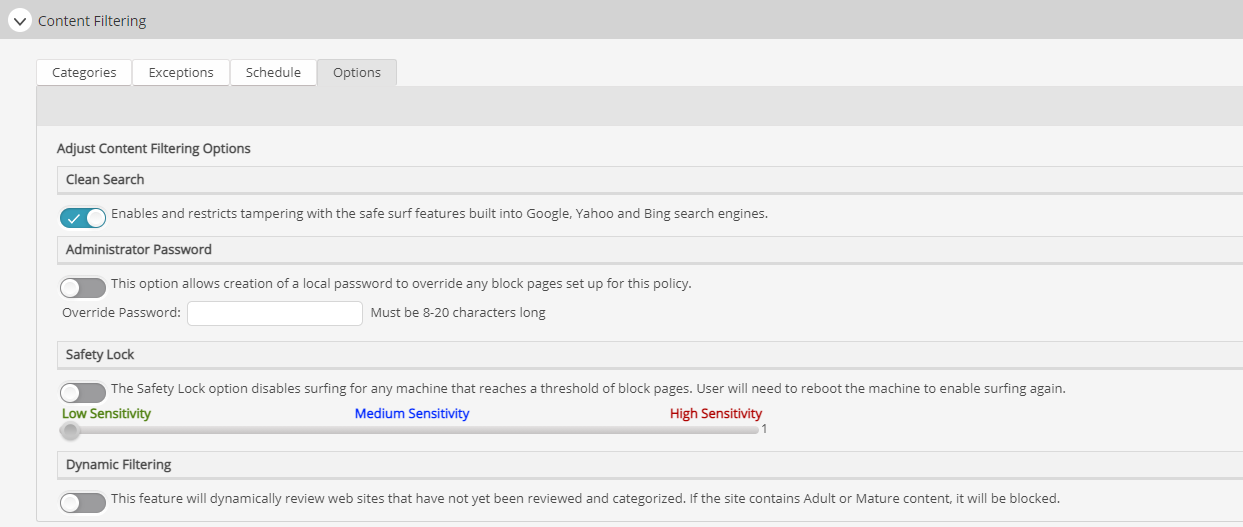PROXIMANOVA-LIGHT.OTF PROXIMANOVA-LIGHTIT.OTF PROXIMANOVA-EXTRABLD.OTF PROXIMANOVA-BOLD.OTFPROXIMANOVA-BLACK.OTF
Get this font in here!
This Article Applies to:
- Avast Business CloudCare
IMPORTANT: The CloudCare console does not support opening multiple tabs in the same browser session. Please use multiple browsers or incognito mode instead.
Content Filtering is an additional service provided to partners and self-managed users to help secure and protect web traffic on end devices. The Content Filtering component gives you flexible control over Internet usage by allowing you to customize the level of filtered sites by category. The ability to create customized exceptions enables you to block or allow specific web sites by URL and create white lists to control Content Filtering more specifically.
The Content Filtering settings are located under the Policies tab.

It is your responsibility to ensure that your customer has a computer usage or similar policy that communicates to its employees that the employee and/or its agents will monitor and may restrict or limit employees' internet usage. You should also make sure that the customer is aware that you will have access to specific data regarding internet usage on the network.
Categories

Most websites are classified into predefined categories which identify the topics of interests that are the main focus of the website. These categories are then put into Category Groups, which are filtered with default settings; however, you can change the status for categories and category groups at any time. The status of an individual URL category will override the status of its parent category group.
You can select the default filter for certain categories using the drop-down menus. Your options are: Allow, Block, and Warn. You can also click the arrow beside a category group name to choose filtering options for the various subcategories.
You can verify the URL category of a website by entering it into the text box beside Check URL Category and clicking Check.
Category Groups, Categories, and Default Settings
Exceptions

Specific URLs, URL patterns (e.g., http://images.search.yahoo.com), and entire domains (e.g., http://youtube.com) can be always blocked or allowed, regardless of category status, by adding them to the Blocked Web Sites or Allowed Web Sites list. White lists can be created by ticking the "Only allow sites listed in the Allowed list" checkbox. You can also ensure users are warned about uncategorized sites by ticking the "Warn Uncategorized Sites" checkbox.
You can add a site to the Blocked or Allowed list by typing in the URL in the corresponding field and clicking either Block or Allow. To remove an exception, click the remove icon (minus sign) next to the URL you want to remove from the list.
Schedule

The time defined within the Schedule feature enables the rules defined within the Categories and Exceptions tabs. All times outside of these times will have no filtering rules applied to them. You can select any number of days of the week and from two time frames: all day, or a specific time range from morning to evening.
Options

This section allows you to enable or disable various Content Filtering settings.
- Clean Search: allows you to manage the built-in safe search feature of the Google, Yahoo, and Bing search engines and ensure these features cannot be altered by end users. The safe search option is designed to filter out explicit, adult–oriented content from search results. These settings must be set in the search engines preferences.
- The Clean Search option is ignored for any search engine that is on your Exceptions list.
- Administrator Password: allows you to create a local administrator password to override blocked pages without compromising the administrative password.
- Safety Lock: prevents attempts to bypass filtering by forcing the user to restart their machine after a specified number of attempts have been blocked.
- The threshold is set on a scale from 1 to 10, where 1 means the user can be blocked in 16 out of the last 16 URLs before having to reboot the machine and 10 means the user can be blocked in 3 out of the last 16 URLs before having to reboot the machine.
- Dynamic Filtering: provides a second line of defense to further protect from the dangers of the Web. When a web page is not categorized in our database, the filter will evaluate the site—its content and links—to make sure it is not a threat.
Other Articles In This Section:
'Page Cannot Be Displayed' Message
Content Filtering Blocking Social Network URL Embeds
Related Articles: